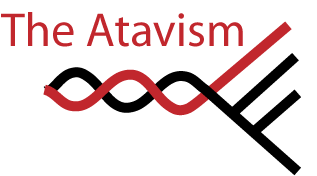Friday, May 28, 2010
Living up to our name
Homo sapiens means "wise man". Sometimes it's hard to think that Linnaeus was right in honouring our species with that name. We're the reason the earth is going through its sixth great extinction; people are still routinely killed for belonging the wrong race, religion or sexuality and the prospect of taking action on climate change makes a significant proportion of the population behave like children. So it's nice to be reminded every now and again about the sorts things our species can do when we put our minds to it. I've been trying to find time to write a proper post about the Neanderthal genome, but here's something to think about on a rainy Friday afternoon.
In 1857 an anatomist and a school teacher, Hermann Schaffhausen and Johann Fuhlrott, described a set of bones that had been discovered in a limestone quarry in what was then called the neanderthal region of Germany. Amazingly, the neanderthal region was named after Joachim Neander whose own name translates as "new man". A new man was exactly what Schaffhausen and Fuhlrott saw in the bones that they described. They were at once human and something "other" Chief among the characters that set the neanderthal samples apart from modern humans was the thick brow ridge that we now think of as characteristic of primitive humans. Thanks to these differences the school teacher and the anatomist concluded that the neanderthal samples were human but something quite different than modern Europeans.
"Neanderthal Man" was the first pre-human fossil to be described. At the time science had no convincing mechanism by which species might change over time and no idea of how organisms passed on traits to their offspring. Within in a couple of years Darwin had published The Origin and Mendel his Experiments on Plant Hybridization (which was promptly ignored, and only cited three times in 30 years). In time scientists discovered more human fossils; Neanderthal man showed up all over Europe and took the name H. neanderthalensis, Euguen Dobois uncovered H. erectus in Asia and host of anthropologists have since added characters like the Turkana boy, H. habilis, Ardi and a whole cast of Australopithecines to our family tree.
The science of heredity moved on too. In the 20th century geneticists, especially Hugo deVries, rediscovered Mendel's work and set about building a particulate theory of inheritance. TH Morgan showed that genes resided on chromosomes, Fisher, Wright Haldane and others synthesized Mendelian genetics with Darwin's ideas on evolution, MacLeod and McCarty showed that DNA (a chemical initially identified by Miescher) contained genetic information (though no one believed them until Hershey and Chase demonstrated it again) and, of course, Watson and Crick showed us what DNA looked like thanks to Rosalind Franklin's x-rays. It took a little over 20 years to get from Watson and Crick's double helix to first complete virus genome and another 30 to scale the 5 orders of magnitude in size between that one and the human genome.
Last month, scientists published a first draft of the Neanderthal genome. 60% of the genetic make up of species of human that has been extinct for thirty thousand years. Thanks to the work of all those scientists listed above, and countless others who go unremembered, we now have a pretty good idea about the genetic basis of the thick brow ridge that convinved Schaffhausen and Fuhlrott than neanderthal man something different than other humans. The Runx2 gene is in a region of the genome that has been selected for in the H. sapiens lineage. We know from the work of yet more scientists that Runx2 is one of the most important genes regulating bone growth in humans and is associated with malformations of the skull. It's no great stretch to imagine that our species lost the brow ridge that that we associate with primitive humans thanks to changes in the expression pattern of Runx2.
It some ways that's a trivial piece of information, we've known for a long time that most morphological change is likely due to changes in the expression pattern of development genes. But isn't it wonderful to think that in the span of two human lifetimes we've moved from knowing nothing of our species' history to the point that we are developing hypothesis on the molecular basis of the changes that made us different from the host of human species we've since discovered.

Labels: evolution, genetics, genomics, Human evolution, human genome, sci-blogs, science
3 Comments:
23jj




